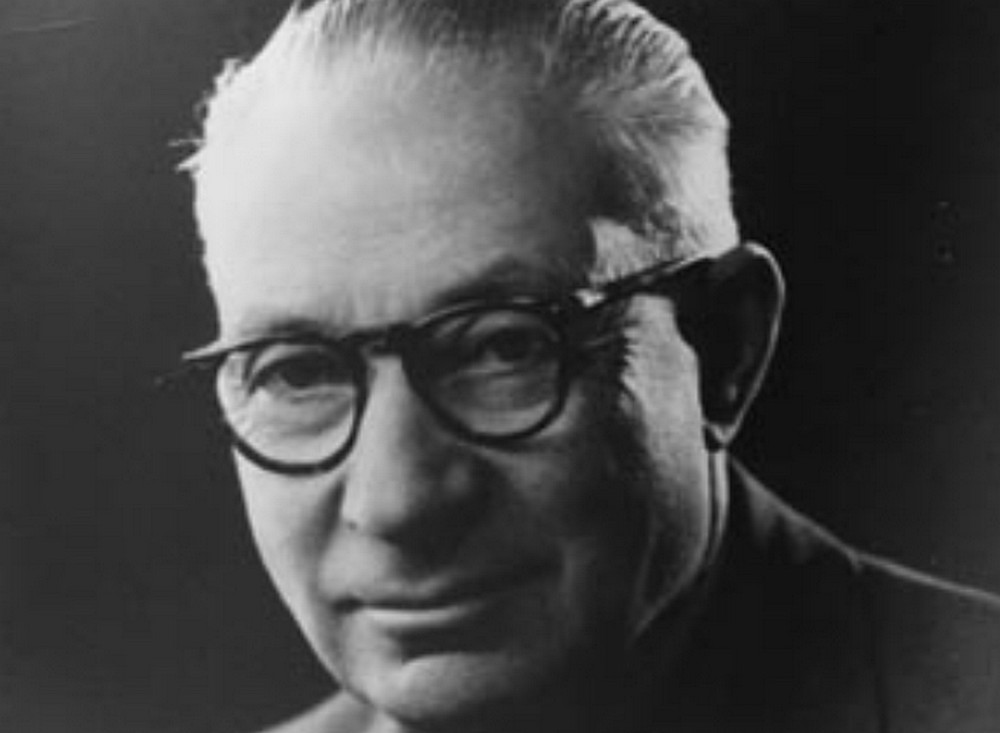[dropcap size=big]A[/dropcap] proposal submitted by the Boyle Heights Neighborhood Council seeks to commemorate an influential Jewish labor leader who lived in and galvanized the neighborhood in the early 20th century, fighting antisemitism while influencing Cesar Chavez and other civil rights and labor activists in our region.
If successful, a beige sign that reads “Julius Levitt Square”—to be developed by LADOT—would be mounted to a pole or fixture on St. Louis Street just north of 1st Street, outside of the former Jewish community stronghold known as the Vladeck Center, where the Hollenbeck Community Police Station now stands. It will be similar in look to signage erected around the corner for civil rights leader Dolores Huerta over two years ago.
Levitt was the first head of the Boyle Heights-based Los Angeles Jewish Labor Committee, and later, the wider Southern California chapter. The national organization was formed by Eastern European immigrants in New York in 1934 to combat Adolf Hitler’s rise to power while also advocating for socialism, unionism, and Jewish culture. Levitt assumed the role in 1935, establishing an independent organization of activists that would eventually form wider coalitions with groups like the NAACP and the Japanese American Citizens League.
Finding a way to honor this local leader was the goal of David A. Silvas, vice president of Boyle Heights Neighborhood Council as well as the V.P. of its Planning and Land Use Committee, who seeks to commemorate Jewish roots within the community of Boyle Heights.
“Boyle Heights was and still is a very multicultural enclave and community, which has gone through many different transformations,” Silvas tells L.A. TACO. “Apart from the Breed Street Schul, there really isn’t that much left visually of the Jewish legacy that people know about. There has been almost an erasure or disappearance of Jewish legacy in the neighborhood.”
Silvas started delving into the Jewish history of Boyle Heights and the Vladeck Center, named for the JLC’s first president and recently saved from the wrecking ball. He was inspired by both Levitt’s local and national influence.
“Julius Levitt was a hugely instrumental person who came from New York, was Jewish, fought for Jewish labor rights and eventually began to connect and encourage other cultures within the community to have labor justice, to ensure that everyone had a voice,” Silvas notes. “He was a very prominent voice. His legacy and history should be honored.”
Silvas refers to claims that Levitt assigned activist Fred Ross to establish the enormously influential, Chicano-led Community Service Organization (CSO) at Chicago and 1st Streets. The CSO would famously help steep Cesar Chavez and union organizer, Dolores Huerta, in grassroots recruiting, activism, voter registration, and organization before they created the National Farm Workers Association and rose to prominence as part of the wider Chicano Movement.
“Dolores Huerta was a product, along with Cesar Chavez and others, of the teachings of people like Julius Levitt,” Silvas states. “[He] had such an impact on Boyle Heights as a local figure. But also had contributions on a national level.”
In addition, Silvas, who by trade is a realtor specializing in Beverly Hills real estate, with an admitted enthusiasm for the preservation of historic properties, says this kind of honor strengthens the community of Boyle Heights at a time when gentrification is howling at the door.
“I think it’s important to know who existed before us and make sure all the diversity in Boyle Heights is honored,” he says. “The Japanese community, the African-American community… there are many people here who have formed the essential fabric of Boyle Heights as a neighborhood. As time goes on, the knowledge and visual references; time, places, people, and buildings, are being erased.”
The naming of Julius Levitt Square is part of a larger mission Silvas has to honor the Jewish heritage of Boyle Heights. His plans include a proposal for a similar memorial at the Vladeck Center and he is excited to help organize the neighborhood’s upcoming Hanukkah celebration at the Breed Street Schul, the first in many years.
Meanwhile, the Julius Levitt memorial will probably be approved, with the project likely to be completed within the “next six months.”
“These are ways to inspire people about what the past is here,” Silvas says. “So they can feel proud and say, ‘hey, these people matter, this place matters.’”







